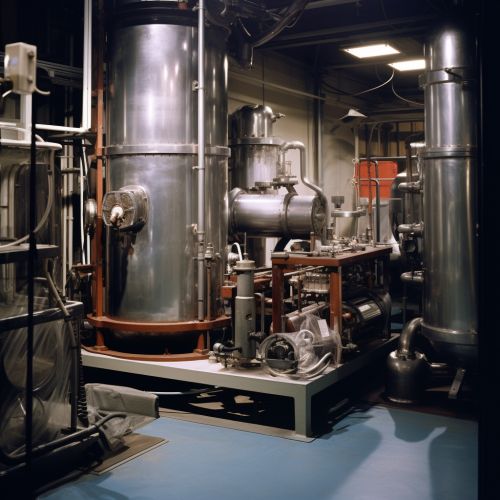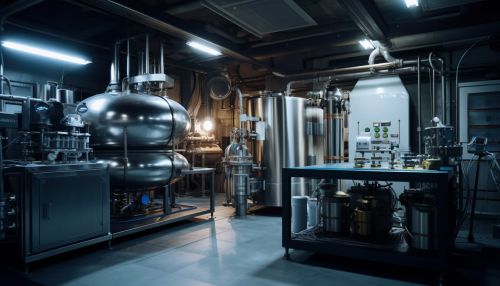Cryogenics
Introduction
Cryogenics is the scientific study of materials and their behavior at extremely low temperatures. The term is derived from the Greek words "kryos", meaning "cold", and "genes", meaning "born of". It is a branch of physics that deals with the production of very low temperatures and the effects of these temperatures on different substances and materials.
History
The history of cryogenics can be traced back to the 19th century when scientists began to understand the behavior of gases at low temperatures. In 1823, British scientist Michael Faraday succeeded in liquefying most gases known at the time. He also studied the effects of these low temperatures on the physical properties of these gases.


Cryogenic Fluids
Cryogenic fluids are the liquids that can be used to achieve very low temperatures. The most commonly used cryogenic fluids are helium and nitrogen. Helium, in particular, can be cooled to temperatures below -269 degrees Celsius, close to absolute zero.
Cryogenic Equipment
Cryogenic equipment is designed to handle cryogenic fluids and maintain very low temperatures. This includes cryogenic storage tanks, cryogenic valves, and cryogenic transfer lines. These devices are designed to withstand the extreme conditions of cryogenic temperatures and to prevent heat from entering the system.
Cryogenic Applications
Cryogenics has a wide range of applications in various fields. In medicine, for example, cryogenics is used in cryosurgery and cryopreservation. Cryosurgery is a type of surgery that uses extreme cold to destroy abnormal tissues, such as tumors. Cryopreservation is the process of preserving cells, tissues, or any other biological constructs by cooling them to very low temperatures.
In the field of electronics, cryogenics is used in the development of superconductors. Superconductors are materials that can conduct electricity without resistance when cooled to cryogenic temperatures. This property is used in the construction of powerful electromagnets, which are used in magnetic resonance imaging (MRI) machines and particle accelerators.
Cryogenic Safety
Working with cryogenic materials can be dangerous due to the extreme cold and the rapid expansion of gases. Therefore, safety precautions must be taken when working with cryogenic fluids. This includes wearing appropriate personal protective equipment (PPE), such as gloves and face shields, and using proper handling techniques.
Future of Cryogenics
The future of cryogenics is promising, with ongoing research in various fields. One of the most intriguing areas of research is in the field of quantum computing. Quantum computers require extremely low temperatures to operate, and cryogenics is crucial in achieving these conditions.
